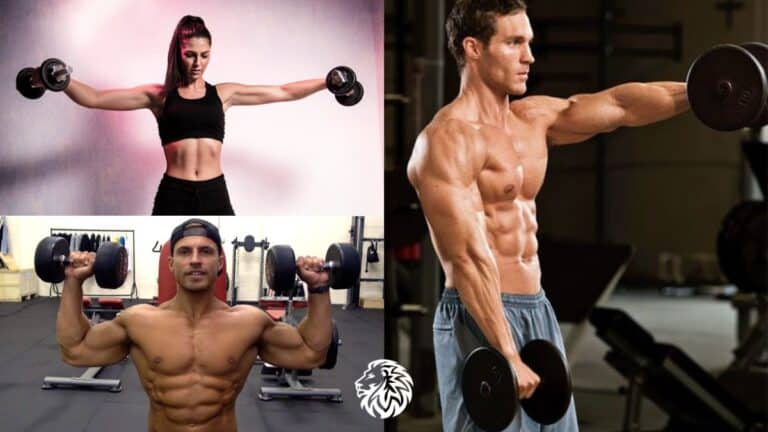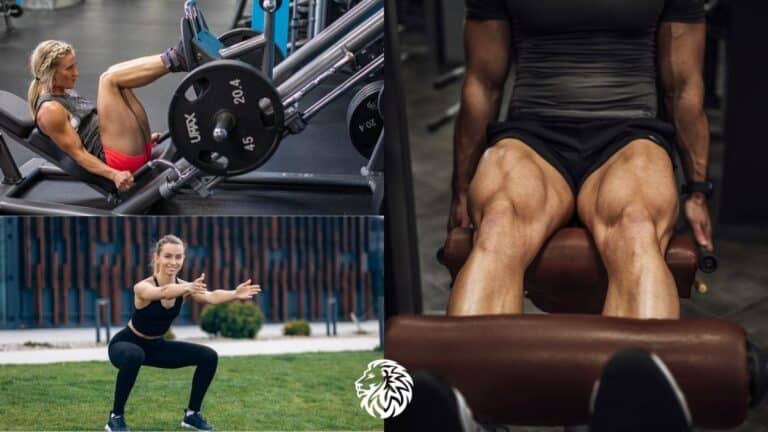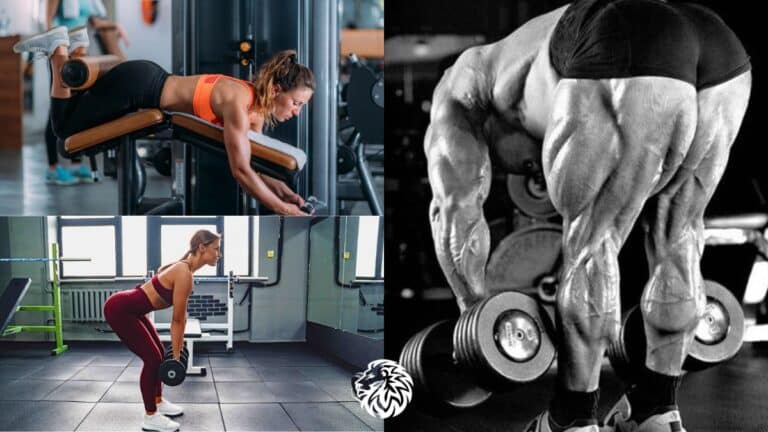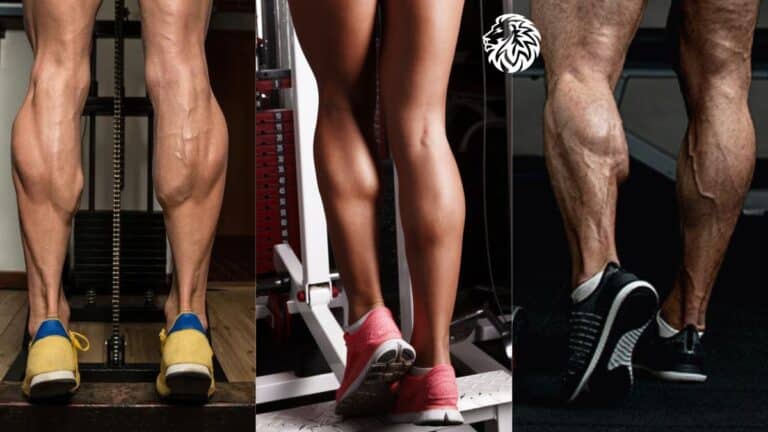Weight loss is a goal many people strive for, and while it’s no secret that maintaining a balanced diet is crucial, the importance of exercise cannot be overstated. Exercise not only helps burn calories but also builds and maintains muscle mass, which boosts metabolism. This comprehensive guide will explore the best exercises to lose weight, providing insights into why these exercises are so effective and how they can be incorporated into your daily routine.
Why Exercise is Essential for Weight Loss
Exercise plays a critical role in a successful weight loss journey. It aids in burning calories, increasing energy levels, and improving overall health. More importantly, it helps prevent chronic diseases such as diabetes, heart disease, and certain cancers. By engaging in regular physical activity, you are better positioned to lose weight, maintain a healthy lifestyle, and enhance your overall well-being.
Calories and Exercise: The basics of weight loss revolve around burning more calories than you consume. Calories are units of energy, and your body requires a certain number to function daily. The more physical activity you do, the more energy your muscles need, which leads to the burning of calories. Different exercises burn varying amounts of calories, depending on factors such as intensity, duration, body weight, and muscle mass.
High-intensity exercises, such as running or high-intensity interval training (HIIT), tend to burn more calories per minute compared to low-intensity exercises like walking. Additionally, strength training exercises build lean muscle mass, which increases your resting metabolic rate and allows your body to burn calories even at rest.
The 7 Best Exercises to Lose Weight
Experts agree that the most effective weight loss exercises involve a combination of cardio, strength training, and flexibility exercises. Here are the best exercises to lose weight, according to fitness professionals:
1. Aerobic Exercises (Cardio)

Cardio exercises are often considered the backbone of any weight loss routine because they directly target calorie burning and improve cardiovascular health. The key to effective cardio is consistency and intensity.
- Jogging/Running: One of the simplest yet most effective forms of cardio, running helps burn a significant number of calories. The faster and longer you run, the more calories you burn. Running at a steady pace improves endurance, while sprint intervals (short bursts of running followed by periods of rest) can dramatically boost metabolism even after the workout is over. An average person can burn between 300 to 600 calories per hour depending on the pace and body weight.
- Cycling: Whether you’re outdoors on a road bike or indoors on a stationary bike, cycling provides a low-impact yet highly effective workout. It’s a fantastic option for those who may have joint issues but still want to engage in high-calorie-burning exercise. It works both the lower body and core muscles while improving stamina and cardiovascular health. A vigorous cycling session can burn anywhere between 400 to 800 calories per hour.
- Swimming: This full-body exercise is not only excellent for burning calories but also works out almost every muscle group in your body. Swimming is particularly beneficial for people with joint pain or injuries because it’s a low-impact workout. Depending on the intensity and stroke, swimming can burn 400 to 700 calories an hour.
The flexibility of aerobic exercises allows you to customize your workouts based on preference. For instance, if running isn’t your favorite, you can cycle or swim for similar benefits.
2. Jumping Rope

Jumping rope is one of the most underestimated exercises, but it packs a punch when it comes to weight loss. Here’s why:
- High Calorie Burn: Just 10 minutes of jumping rope can be equivalent to running an eight-minute mile. This exercise can burn about 10 to 16 calories per minute, making it an incredibly efficient workout. A 30-minute session can burn 300 to 500 calories depending on intensity and body weight.
- Improves Coordination and Agility: Jumping rope is more than just about burning calories—it also improves coordination, foot speed, and agility. These improvements are useful not only in athletic performance but also in everyday activities that require balance and precision.
- Engages Multiple Muscle Groups: The beauty of jumping rope lies in its simplicity and the fact that it engages your entire body, including your legs, arms, shoulders, and core. The full-body engagement increases calorie burn and enhances muscle tone.
Jumping rope is also a convenient and affordable option since it requires minimal space and equipment. It’s a great choice for home workouts or quick, high-intensity sessions.
3. Sprints

Sprinting is another powerful exercise for those looking to lose weight efficiently. This high-intensity workout is ideal for short, intense bursts of activity.
- Maximizes Calorie Burn in a Short Time: Sprinting involves pushing your body to its limit for short intervals, which significantly elevates your heart rate and boosts your metabolism. Even though the sprinting session may last only 15-30 minutes, it’s highly effective because of the intensity. This exercise also promotes EPOC (Excess Post-exercise Oxygen Consumption), meaning you continue to burn calories at a higher rate even after you finish your workout.
- Boosts Muscle Strength and Speed: Sprinting works your glutes, hamstrings, quads, and calves, giving you lean, strong legs. It also increases your speed and endurance over time, making it easier to handle more prolonged periods of cardio.
- Time-Efficient: Sprints don’t require long durations to be effective. Even a 20-minute sprint workout, which includes short bursts of maximum effort running followed by brief recovery, can deliver significant fat loss results over time.
4. High-Intensity Interval Training (HIIT)

HIIT has become a go-to workout for weight loss due to its efficient, high-calorie-burning nature.
- Alternating High and Low Intensity: A typical HIIT session involves short bursts of intense activity (such as sprinting, burpees, or jumping jacks) followed by brief periods of rest or low-intensity exercise. This interval-based approach keeps your heart rate elevated and maximizes calorie burn in a short amount of time.
- Continued Calorie Burn After Workout: One of the primary advantages of HIIT is its ability to keep your metabolism revved up long after the workout is over. Known as the “afterburn effect,” this phenomenon helps you continue to burn calories for hours post-workout, making it more effective than steady-state cardio.
- Full-Body Workout: HIIT can include a variety of exercises that target different muscle groups. Combining movements like squats, lunges, push-ups, and mountain climbers provides a comprehensive workout that burns fat while building muscle.
The intensity and variability of HIIT workouts also prevent boredom, making it easier to stick to a routine.
5. Strength Training

Strength training, often overlooked by those focused solely on cardio, is crucial for sustainable weight loss. Here’s why:
- Builds Lean Muscle Mass: Muscle burns more calories than fat, even when you’re at rest. By engaging in strength training, you build lean muscle tissue, which increases your resting metabolic rate. This means you’ll burn more calories throughout the day, even when you’re not exercising.
- Promotes Fat Loss, Not Just Weight Loss: Unlike cardio, which may result in the loss of both fat and muscle, strength training helps preserve lean muscle while focusing on fat loss. This leads to a more toned and defined appearance.
- Increases Strength and Functional Fitness: Strength exercises like squats, lunges, deadlifts, and bench presses help build overall strength, improving daily functional movements. Stronger muscles can prevent injuries, enhance posture, and improve balance.
By lifting weights or using resistance bands, you can effectively target all the major muscle groups—legs, arms, core, and back—ensuring a balanced body transformation.
6. Plank Variations

Planks are one of the best exercises for strengthening the core and toning the entire body.
- Core Engagement: Planks primarily target your abdominal muscles, but they also engage the shoulders, arms, back, and legs. By strengthening your core, you improve posture and reduce the risk of lower back pain.
- Versatile and Accessible: Plank variations, such as forearm planks, side planks, and plank jacks, add intensity to your workout and challenge different muscle groups. They can be performed anywhere, making them a perfect addition to home workouts.
- Increases Endurance: Holding plank positions for extended periods improves muscle endurance, making you stronger in other exercises like running, cycling, or weightlifting.
7. Pilates and Yoga
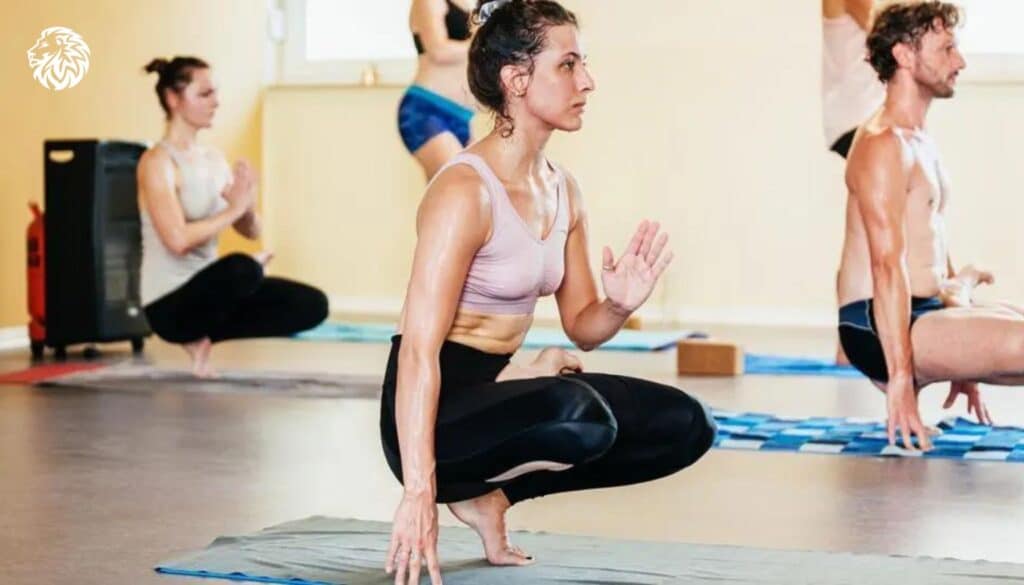
While Pilates and yoga may not burn as many calories as other high-intensity exercises, they play a significant role in weight loss by improving flexibility, mental focus, and muscle tone.
- Improves Flexibility and Muscle Tone: Pilates focuses on controlled movements that target the core, while yoga emphasizes flexibility, balance, and strength. Both are excellent for developing lean muscle, which aids in long-term weight maintenance.
- Reduces Stress and Promotes Mindfulness: Stress is often linked to weight gain due to increased levels of cortisol, which can trigger overeating. Yoga, in particular, promotes mindfulness and reduces stress, helping you make healthier choices throughout your weight loss journey.
- Enhances Recovery: Incorporating Pilates or yoga into your routine can aid in recovery by stretching tight muscles, improving circulation, and increasing mobility. This makes these practices a perfect complement to more intense workouts like HIIT and weightlifting.
To maximize the benefits of these exercises, the key is variety. By alternating between cardio, strength training, and flexibility exercises, you’ll avoid workout plateaus, challenge different muscle groups, and maintain motivation. Whether you’re looking to lose a few pounds or significantly transform your body, these exercises are highly effective tools for reaching your goals.
Creating an Effective Workout Routine
Now that you’re familiar with the best exercises to lose weight, how do you structure them into a weekly routine? A balanced workout schedule should include cardio, strength training, and flexibility exercises for optimal results. Here’s a sample weekly workout plan:
- Monday: 30 minutes of jogging or cycling + 15 minutes of strength training (squats, lunges, push-ups)
- Tuesday: 20 minutes of HIIT (jumping jacks, burpees, sprints) + 10 minutes of core exercises (planks, sit-ups)
- Wednesday: Rest day or light activity like yoga or stretching
- Thursday: 30 minutes of swimming or aerobic exercise + 15 minutes of strength training (deadlifts, bicep curls)
- Friday: 20 minutes of jumping rope or running sprints + 10 minutes of core exercises (planks, leg raises)
- Saturday: 40 minutes of Pilates or yoga + 15 minutes of light cardio (brisk walking)
- Sunday: Active recovery (walking, stretching, or light cycling)
This routine allows for a mix of high-intensity cardio, strength training, and flexibility exercises, ensuring a comprehensive approach to weight loss. Remember, consistency is key, and over time, you’ll notice improvements in both your fitness level and body composition.
Maximizing Your Calorie Burn
To maximize your calorie burn during each workout session, it’s important to keep your routine diverse and challenging. Incorporating interval training, increasing the intensity or duration of your exercises, and engaging different muscle groups are great ways to ensure you continue burning fat and building lean muscle. Proper hydration, a balanced diet, and adequate rest also play crucial roles in your overall progress.
How Much Weight Can You Expect to Lose?
While exercise is a critical component of weight loss, it’s important to maintain realistic expectations. The amount of weight you can expect to lose will vary depending on factors such as your starting weight, fitness level, and diet. Generally, a safe and sustainable rate of weight loss is 1 to 2 pounds per week. This is typically achieved through a calorie deficit of 500 to 1,000 calories per day, which can be accomplished by combining exercise with a healthy, balanced diet.
Conclusion: The Path to Sustainable Weight Loss
Losing weight and keeping it off requires a long-term commitment to exercise and healthy living. By incorporating the best exercises to lose weight—such as aerobic exercises, HIIT, strength training, and planks—into your routine, you’ll not only shed pounds but also improve your overall health and fitness. Remember, the key to success is consistency, and with dedication, you’ll be well on your way to achieving your weight loss goals.
The best approach to weight loss combines a variety of exercises with mindful eating, hydration, and proper rest. Whether you’re new to working out or an experienced fitness enthusiast, finding a workout routine that challenges and motivates you is the first step towards sustainable success.
Frequently Asked Questions (FAQs) About Best Exercises to Lose Weight
1. What are the best exercises to lose weight?
The best exercises for weight loss include a mix of cardio, strength training, and flexibility exercises. Effective options are running, cycling, swimming, HIIT, strength training, and plank variations. These exercises boost metabolism, burn calories, and help build lean muscle mass.
2. How often should I exercise to lose weight?
To lose weight, aim for at least 150 minutes of moderate-intensity aerobic exercise (e.g., jogging or cycling) or 75 minutes of vigorous-intensity exercise (e.g., running or HIIT) each week. Combine this with strength training exercises at least two days per week for optimal results.
3. Can I lose weight just by doing cardio?
While cardio is effective for burning calories and improving cardiovascular health, combining it with strength training is essential for sustainable weight loss. Strength training builds muscle, which increases your resting metabolic rate, helping you burn more calories throughout the day.
4. How long should I work out each day to lose weight?
Workouts should last 30 to 60 minutes per day, depending on the intensity. High-intensity workouts like HIIT can be as short as 20-30 minutes, while moderate-intensity activities like jogging or cycling may require 45-60 minutes for optimal calorie burn.
5. What is the best time of day to exercise for weight loss?
There is no universally “best” time to exercise for weight loss. The most effective time is when you feel most energized and can maintain consistency, whether that’s morning, afternoon, or evening.
6. Can I lose weight by working out at home?
Yes, many effective weight loss exercises can be done at home, including HIIT, bodyweight exercises (like squats and lunges), jumping rope, and plank variations. These exercises require minimal or no equipment and can provide excellent results.
7. How long does it take to see weight loss results from exercise?
Visible results from exercise depend on factors such as diet, intensity, consistency, and starting fitness level. On average, individuals can expect to see noticeable changes within 4 to 6 weeks, with consistent effort and a balanced diet.
8. Can I lose weight without doing high-intensity exercises?
Yes, moderate-intensity exercises like brisk walking, cycling, and swimming can lead to weight loss, especially when combined with a healthy diet. However, high-intensity workouts, such as HIIT, can accelerate fat loss by boosting metabolism and burning more calories in less time.
9. Do I need to lift weights to lose weight?
Lifting weights or performing strength training is highly beneficial for weight loss because it helps build muscle, which increases your metabolism. While cardio burns more calories during the workout, strength training contributes to long-term fat loss by increasing muscle mass.
10. How important is diet in combination with exercise for weight loss?
Diet is just as important, if not more, than exercise when it comes to weight loss. A balanced diet, rich in whole foods and controlled in calories, supports weight loss by providing the necessary energy and nutrients while maintaining a calorie deficit. Exercise complements this by burning additional calories and building muscle.
Related Stories:
Effective Exercises for Weight Loss
The Best Time to Exercise for Weight Loss
11 Best Exercises to Lose Weight
The Best Exercises to Lose Weight and Build Strength for Women
Best Exercises to Lose Weight and Boost Metabolism
The 8 Best Exercises for Weight Loss
The Best Exercises to Lose Weight and Boost Calorie Burn

